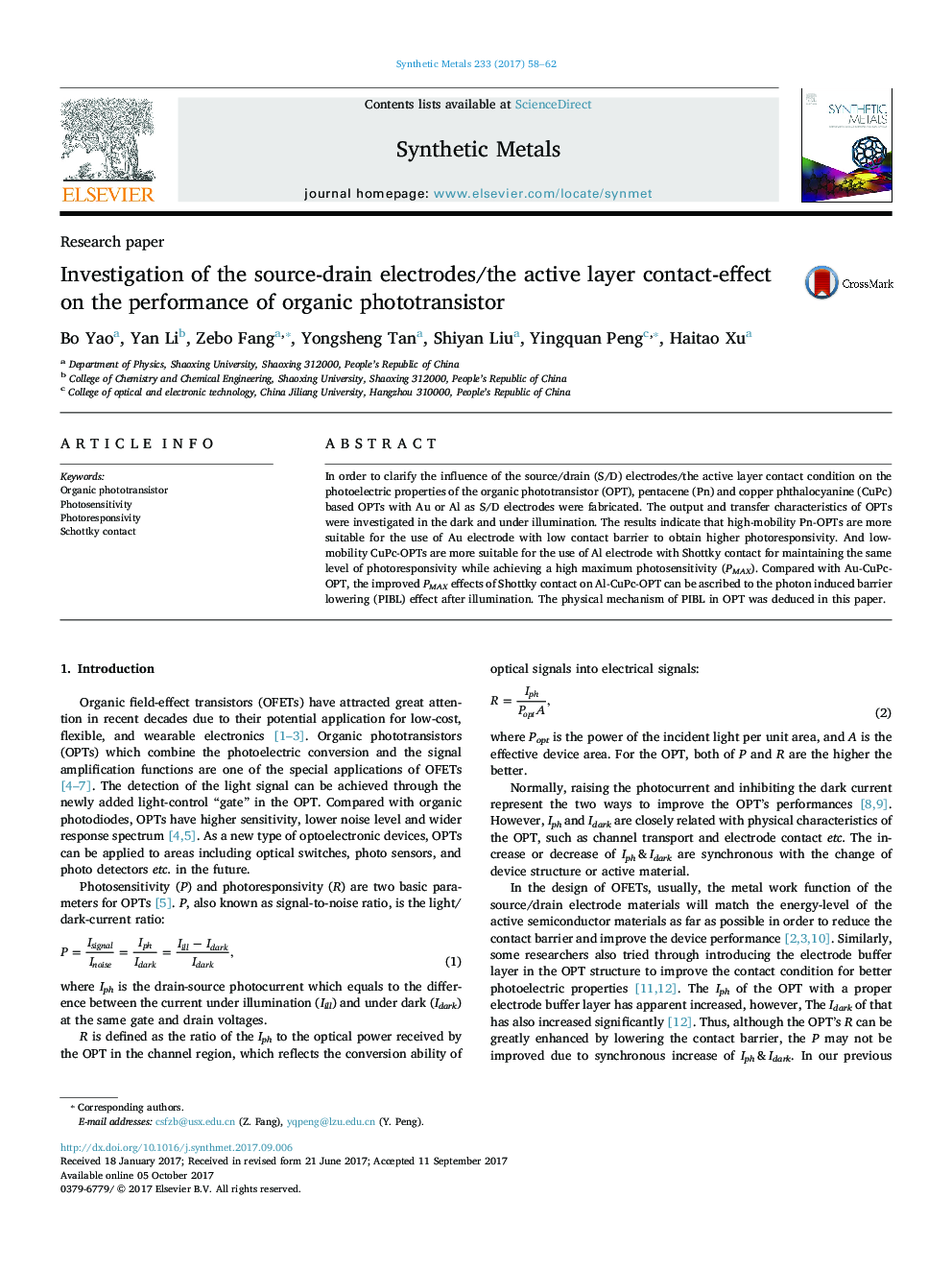| Article ID | Journal | Published Year | Pages | File Type |
|---|---|---|---|---|
| 5435314 | Synthetic Metals | 2017 | 5 Pages |
â¢Pentacene-OPT with Au electrodes obtains higher photoresponsivity than that with Al.â¢CuPc-OPT with Al Shottky contact achieves a higher PMAX than that with Au electrodes.â¢The improved PMAX effects in Al-CuPc-OPT can be ascribed to PIBL effect.â¢The physical mechanism of photon induced barrier lowering in OPT was studied.â¢Schottky barrier of source-drain/active layer plays a beneficial role in some OPTs.
In order to clarify the influence of the source/drain (S/D) electrodes/the active layer contact condition on the photoelectric properties of the organic phototransistor (OPT), pentacene (Pn) and copper phthalocyanine (CuPc) based OPTs with Au or Al as S/D electrodes were fabricated. The output and transfer characteristics of OPTs were investigated in the dark and under illumination. The results indicate that high-mobility Pn-OPTs are more suitable for the use of Au electrode with low contact barrier to obtain higher photoresponsivity. And low-mobility CuPc-OPTs are more suitable for the use of Al electrode with Shottky contact for maintaining the same level of photoresponsivity while achieving a high maximum photosensitivity (PMAX). Compared with Au-CuPc-OPT, the improved PMAX effects of Shottky contact on Al-CuPc-OPT can be ascribed to the photon induced barrier lowering (PIBL) effect after illumination. The physical mechanism of PIBL in OPT was deduced in this paper.
